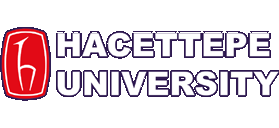ACADEMICS
Course Details
ELE643 - Advanced Computer Architecture
2025-2026 Fall term information
The course is not open this term
ELE643 - Advanced Computer Architecture
| Program | Theoretıcal hours | Practical hours | Local credit | ECTS credit |
| MS | 3 | 0 | 3 | 8 |
| Obligation | : | Elective |
| Prerequisite courses | : | - |
| Concurrent courses | : | - |
| Delivery modes | : | Face-to-Face |
| Learning and teaching strategies | : | Lecture, Question and Answer, Problem Solving |
| Course objective | : | In this course, it is aimed to teach topics on advanced computer architecture which reflect the latest trends in this fields |
| Learning outcomes | : | A student completing the course successfully will learn most of the latest trends in advanced computer architecture Apply the techniques s/he learnt in the class to her/his thesis studies and also real-life applications, Have the adequate knowledge to follow and understand advanced up-to-date computer architecture concepts. |
| Course content | : | Introduction to Computer Architecture MIPS ISA and ALU Understanding Performance MIPS datapath MIPS Architecture Basics of Pipeline technique Solutions to hazard problem Reducing branch costs Memory hierarchy DRAM architectures Introduction to Cache Improving cache performance RAID architectures Buses and I/O interfaces Multiprocessor Introduction Multiple Issue Introduction Superscalar Pipeline |
| References | : | Patterson, Computer Organization and Design the Hardware Software Interface, 3rd edition, Elsevier.; Johnson M, Superscalar Microprocessor Design, Prentice Hall. |
| Weeks | Topics |
|---|---|
| 1 | Introduction to Computer Architecture |
| 2 | MIPS ISA and ALU -MIPS datapath- MIPS Architecture |
| 3 | Understanding Performance |
| 4 | Basics of Pipeline technique |
| 5 | Solutions to hazard problem |
| 6 | Reducing branch costs-Memory hierarchy |
| 7 | DRAM architectures |
| 8 | Midterm |
| 9 | Introduction to Cache - Improving cache performance |
| 10 | RAID architectures |
| 11 | Buses and I/O interfaces |
| 12 | Multiprocessor Introduction |
| 13 | Multiple Issue Introduction |
| 14 | Superscalar Pipeline |
| 15 | Final exam |
| 16 | Final exam |
| Course activities | Number | Percentage |
|---|---|---|
| Attendance | 0 | 0 |
| Laboratory | 0 | 0 |
| Application | 0 | 0 |
| Field activities | 0 | 0 |
| Specific practical training | 0 | 0 |
| Assignments | 14 | 30 |
| Presentation | 0 | 0 |
| Project | 0 | 0 |
| Seminar | 0 | 0 |
| Quiz | 0 | 0 |
| Midterms | 1 | 30 |
| Final exam | 1 | 40 |
| Total | 100 | |
| Percentage of semester activities contributing grade success | 60 | |
| Percentage of final exam contributing grade success | 40 | |
| Total | 100 | |
| Course activities | Number | Duration (hours) | Total workload |
|---|---|---|---|
| Course Duration | 14 | 3 | 42 |
| Laboratory | 0 | 0 | 0 |
| Application | 0 | 0 | 0 |
| Specific practical training | 0 | 0 | 0 |
| Field activities | 0 | 0 | 0 |
| Study Hours Out of Class (Preliminary work, reinforcement, etc.) | 14 | 6 | 84 |
| Presentation / Seminar Preparation | 0 | 0 | 0 |
| Project | 0 | 0 | 0 |
| Homework assignment | 14 | 3 | 42 |
| Quiz | 0 | 0 | 0 |
| Midterms (Study duration) | 1 | 36 | 36 |
| Final Exam (Study duration) | 1 | 36 | 36 |
| Total workload | 44 | 84 | 240 |
| Key learning outcomes | Contribution level | |||||
|---|---|---|---|---|---|---|
| 1 | 2 | 3 | 4 | 5 | ||
| 1. | Has general and detailed knowledge in certain areas of Electrical and Electronics Engineering in addition to the required fundamental knowledge. | |||||
| 2. | Solves complex engineering problems which require high level of analysis and synthesis skills using theoretical and experimental knowledge in mathematics, sciences and Electrical and Electronics Engineering. | |||||
| 3. | Follows and interprets scientific literature and uses them efficiently for the solution of engineering problems. | |||||
| 4. | Designs and runs research projects, analyzes and interprets the results. | |||||
| 5. | Designs, plans, and manages high level research projects; leads multidiciplinary projects. | |||||
| 6. | Produces novel solutions for problems. | |||||
| 7. | Can analyze and interpret complex or missing data and use this skill in multidiciplinary projects. | |||||
| 8. | Follows technological developments, improves him/herself , easily adapts to new conditions. | |||||
| 9. | Is aware of ethical, social and environmental impacts of his/her work. | |||||
| 10. | Can present his/her ideas and works in written and oral form effectively; uses English effectively. | |||||
1: Lowest, 2: Low, 3: Average, 4: High, 5: Highest
